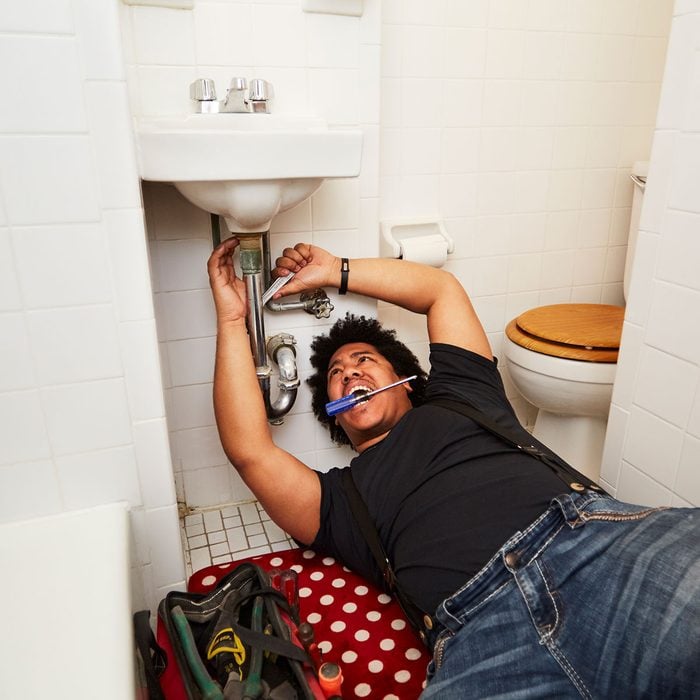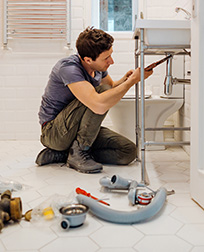Trustworthy Plumber Alabaster AL for All Your Emergency Requirements
Trustworthy Plumber Alabaster AL for All Your Emergency Requirements
Blog Article
A Step-by-Step Guide to Efficient Water Heater Installment for Optimum Efficiency
Starting the task of installing a water heating system is a venture that demands accuracy and an organized method for achieving optimum efficiency. The process starts with the critical choice of choosing the suitable heater customized to the particular needs of your family, thinking about variables such as dimension, energy, and kind source. When chosen, preparing the installment area to fulfill security standards is extremely important. Nevertheless, the trip doesn't finish right here. As you continue, the ins and outs of attaching water lines and establishing reliable electric or gas links await, encouraging insights right into guaranteeing performance and reliability.
Picking the Right Hot Water Heater

Next, think about the dimension and ability of the hot water heater. It's important to examine your house's hot water needs, which can vary based on the variety of owners and their use patterns. A device that's too small may bring about insufficient warm water, while an oversized design may lead to unnecessary energy usage.
Effectiveness scores likewise play a critical role in option. Try to find hot water heater with high Energy Element (EF) scores, showing exceptional performance and decreased energy usage. Tankless designs, though typically much more costly in advance, offer considerable power savings over time because of their on-demand home heating capabilities.
Preparing the Installation Area
Before mounting a new water heating system, precise prep work of the setup location is vital. It's important to measure the area thoroughly to suit the water heater's measurements, ensuring appropriate clearance around the unit for effective procedure and servicing.
Examine the floor for stability, as the water heating unit will certainly require a strong, level surface to operate efficiently. If required, install a drip pan beneath the unit to capture possible leakages or spills, protecting against water damages to the surrounding location.
Furthermore, make sure that all needed devices and products get on hand prior to beginning the setup. This includes items such as wrenches, screwdrivers, a degree, and any kind of extra hardware required for securing the heater and mounting. A well-prepared installment location sets the structure for an effective hot water heater setup, maximizing efficiency and security.
Connecting Supply Of Water Lines
When connecting water lines to your freshly set up hot water heater, it is critical to make certain that all links are leak-free and secure to preserve efficient procedure and avoid water damages. Begin by determining the hot and cool supply of water lines. The cold water inlet is normally marked with a blue tag or a "C", while the warm water electrical outlet is marked with a red label or an "H".
Usage versatile hot water heater ports to facilitate a much easier installation procedure. These connectors can take in resonance and permit mild motion, reducing the threat of leaks. Prior to attaching the ports, position a plumbing professional's tape around the threaded ends of the hot water heater's inlet and electrical outlet pipes - Drain Cleaning Alabaster AL. This tape functions as a sealer, stopping leaks. Carefully connect the versatile tubes to the respective inlet and outlet, making certain that they are not over-tightened but limited, which can damage the strings.
When links remain in area, gradually activate the main supply of water shutoff. Inspect each connection for leaks by visually feeling and checking for moisture. Tighten connections as required, and guarantee the pressure alleviation shutoff is appropriately installed, safeguarding against too much stress accumulation.
Setting Up Electrical or Gas Connections
Properly establishing the electric or gas links for your water heating system is a crucial step to ensure effective and risk-free operation. For electric hot water heater, start by validating that the electric circuit works with the heater's voltage and amperage needs. Make certain the power supply is shut off at the circuit breaker to avoid mishaps. Attach the electric wires to the heating system adhering to the supplier's electrical wiring representation. Usually, this includes connecting the ground cord to the environment-friendly terminal, and the continuing to be cables to their corresponding terminals, safeguarding each with cable nuts.
For gas water heaters, security is critical. Validate that the gas supply is off before continuing. Connect the gas line to the water heating unit making use of a versatile gas adapter, ensuring it is appropriately threaded and sealed with pipeline joint compound or Teflon tape appropriate for gas links. Tighten the links with a wrench, taking treatment not to over-tighten (Drain Cleaning Alabaster AL). why not check here
Once connections are made, check for any kind of potential leaks. For gas lines, use a soapy water solution to the joints; bubbles suggest a leak. For electric links, ascertain that all wiring is protected and appropriately shielded, keeping conformity with neighborhood electric codes.
Evaluating and Changing for Performance
With the electric and gas links safely in place, the next action is reviewing the functional effectiveness of your water heater. Begin by carefully transforming on the water supply and making certain there are no leaks at any of the shutoffs or joints.
Following, do a complete examination to make sure the burner or gas burners are functioning appropriately. For electric heaters, utilize a multimeter to validate if the aspects are drawing the proper present. In gas models, observe the heater flame; it needs to be steady and blue, showing effective combustion.
Readjust the setups as necessary to remove inefficiencies. Take into consideration carrying out insulation measures, such as including a water heater covering, to even more boost performance by decreasing heat Recommended Site loss. Furthermore, check the anode pole's condition, as a shabby pole can lower effectiveness and bring about storage tank deterioration.
Conclusion
Efficient water heater setup is vital for making certain optimum efficiency and power financial savings. Securely connecting water supply lines and carefully setting up electrical or gas links minimize potential issues.

Effectively setting up the electrical or gas connections for your water heater is a critical action to ensure effective and risk-free operation. For electric water heating units, begin by confirming that the electric circuit is suitable with the heating system's voltage and amperage needs. Attach the gas line to the water heating system making use of an adaptable gas adapter, guaranteeing it is appropriately threaded and sealed with pipe joint compound or Teflon tape suitable for gas connections.
Report this page